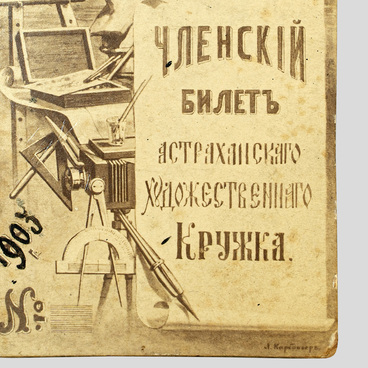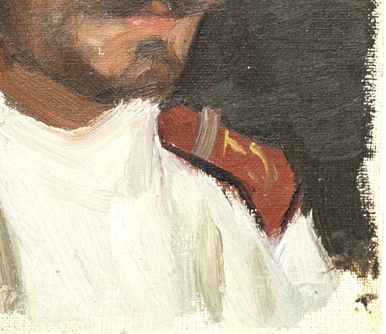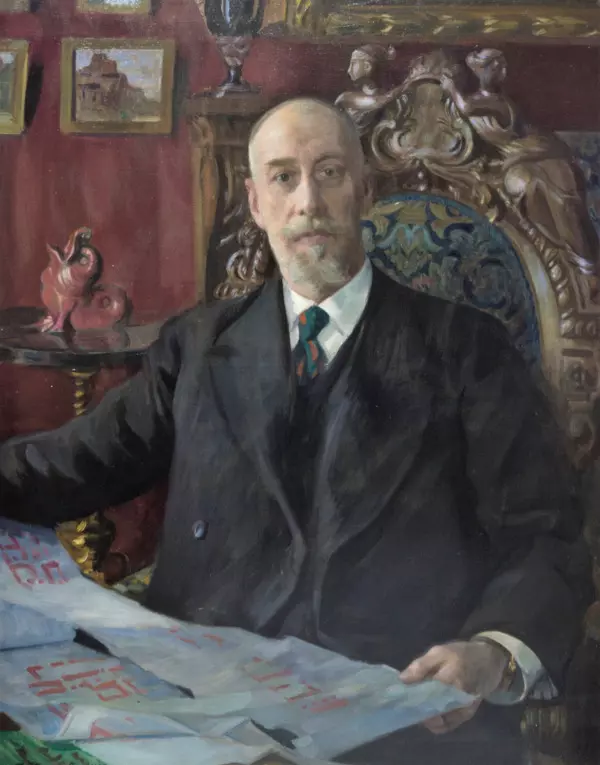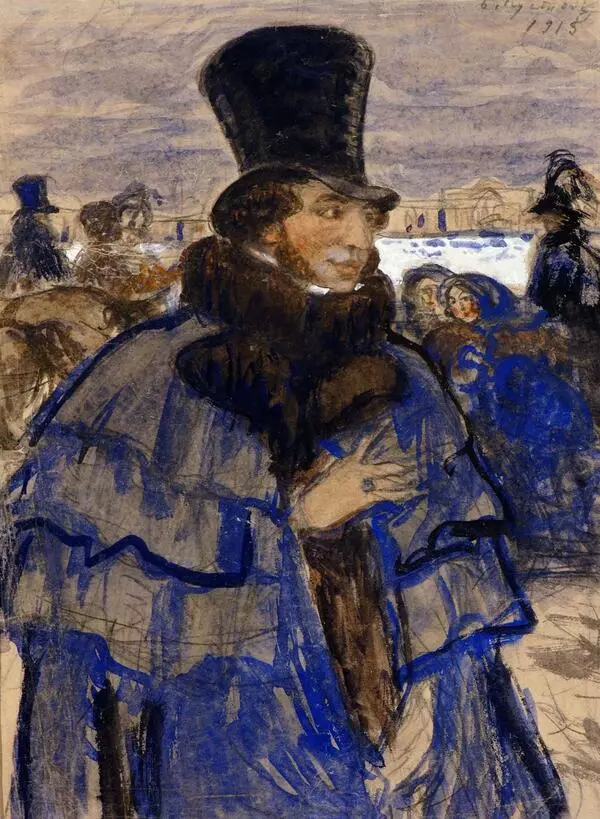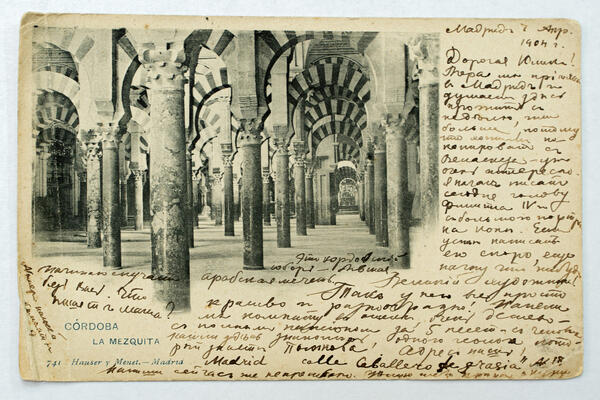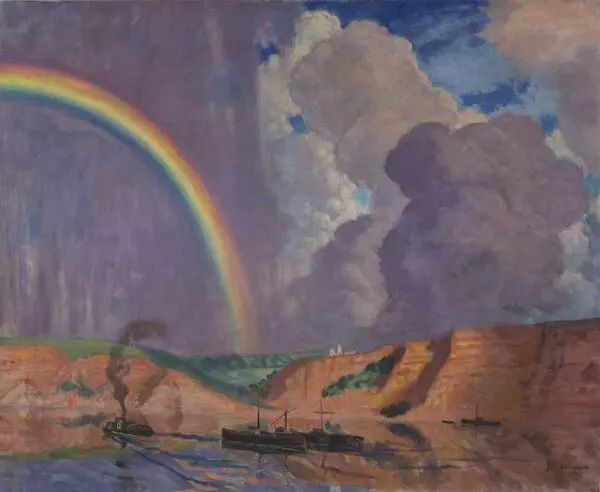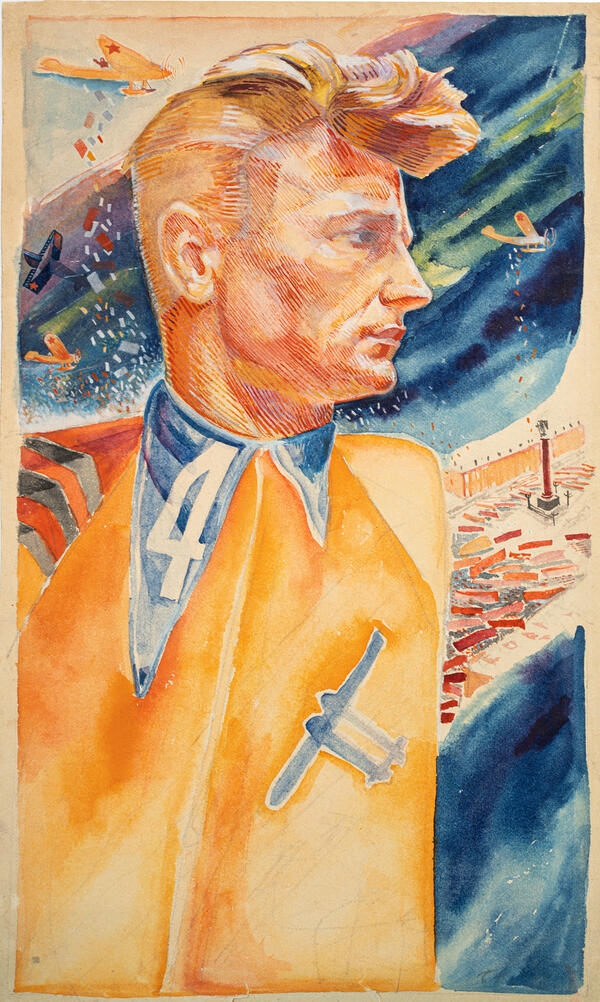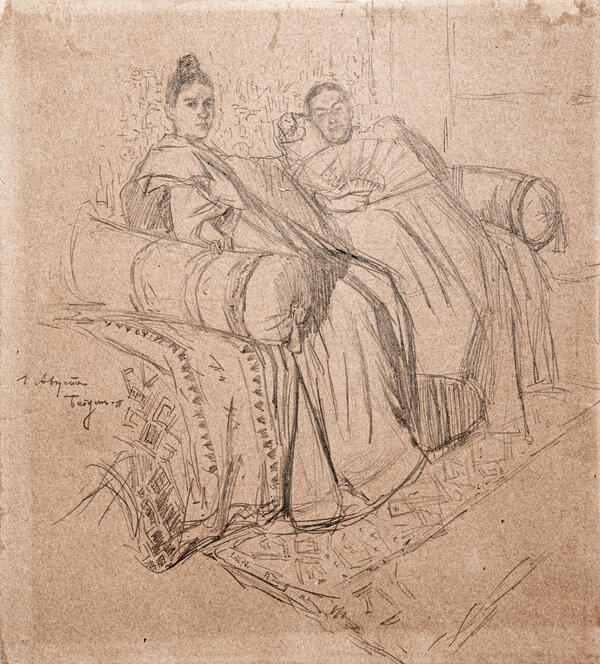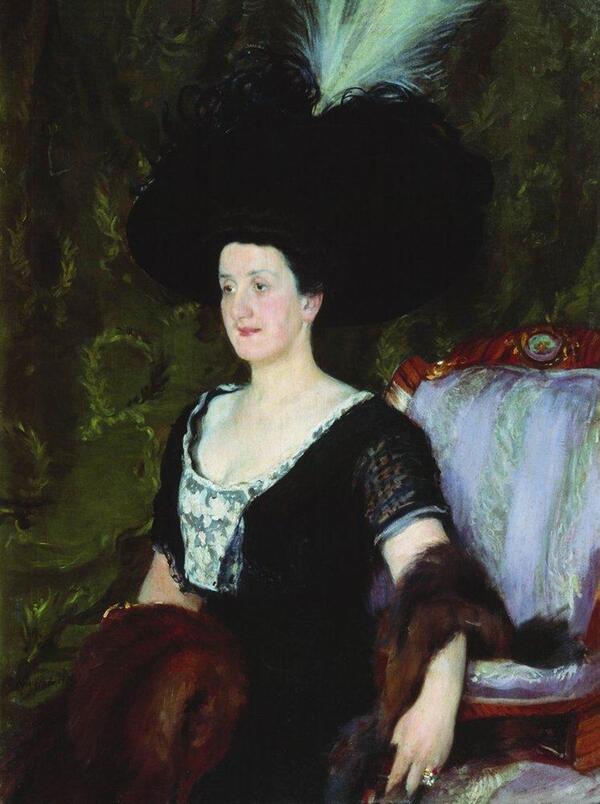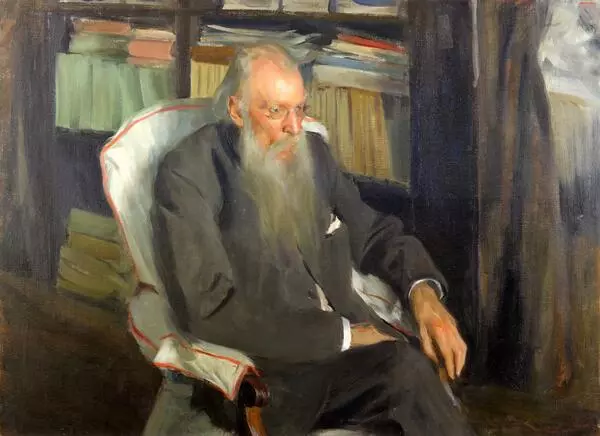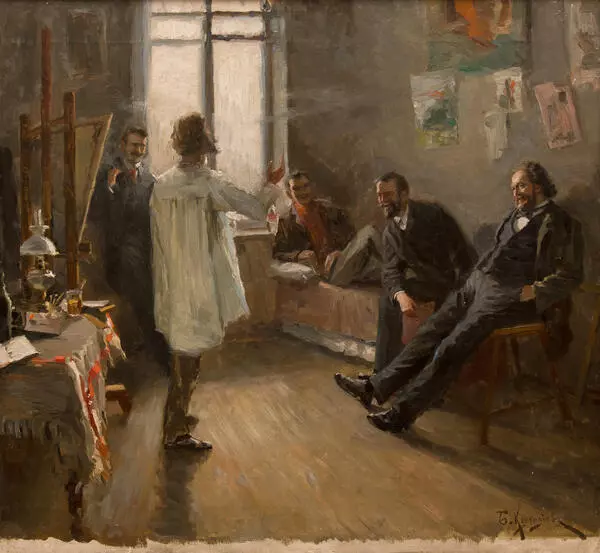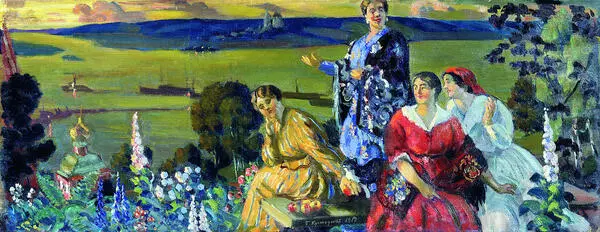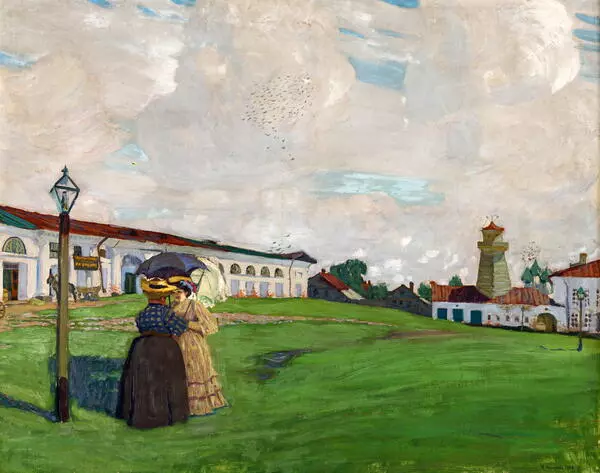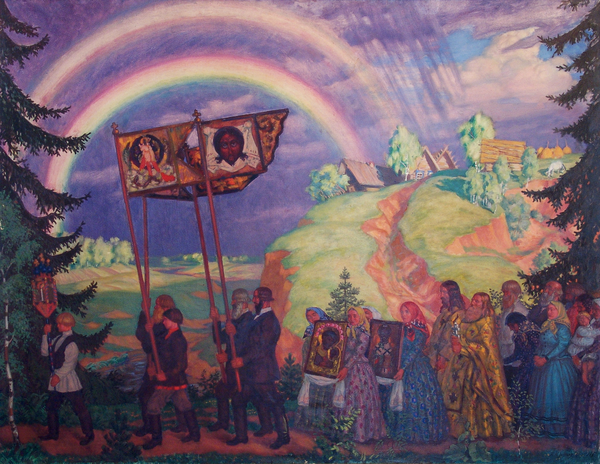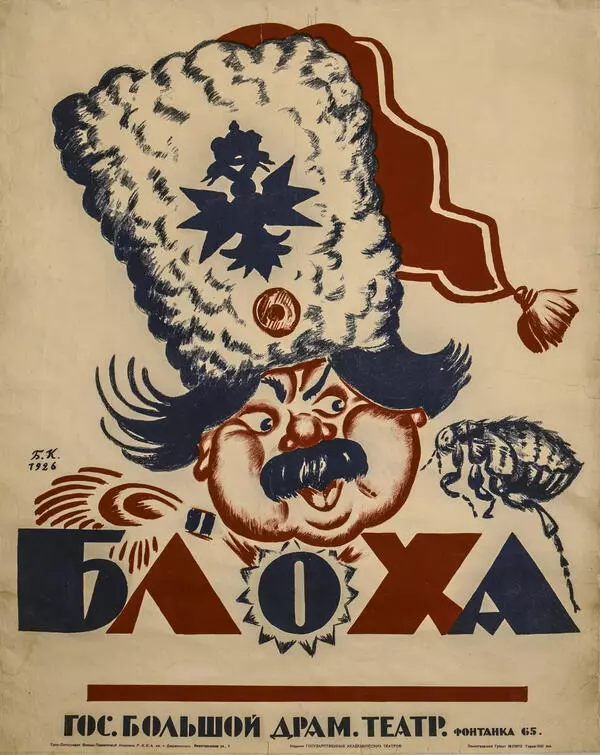The hall of late graphic works of the Boris Mikhailovich Kustodiev House Museum presents a hand-painted watercolor lithograph sheet “Maslenitsa”. This lithograph is a variant of the artist’s 1921 painting “Winter” (“Maslenitsa”).
Kustodiev is often called a festive artist, and rightly so. His paintings are filled with bright, cheerful colors, and many of them, indeed, depict various festivities. Regardless of the time of year, be it spring, summer, autumn or winter, the latter being the artist’s favorite season, his drawings and paintings create an uplifting atmosphere and show people enjoying life. The holiday of Maslenitsa was one of the painter’s favorite themes. The holiday, which came from Paganism, symbolizes the expulsion of winter; also known as Cheesefare, Crepe or Gluttony Week, full of games, entertainment, and hearty meals, it is believed to show that people are full of strength and ready to meet the spring.
In the album “Sixteen Autolithographs”, Kustodiev proves to be an amazing master of detail. In depicting his favorite holiday repeatedly, the artist was able to highlight different aspects of folk festivities. Admiration for the winter landscape and bright, vivid colors — all that can be found in Kustodiev’s works. Maslenitsa has always been associated with slides and sleds, riding a troika, fist fights, circuses, and merry-go-rounds. And, of course, splendid fairs and the flavor of pirozhki and bliny with every possible topping: caviar, honey, jam, sour cream… The artist puts the whole festive world on a small-format sheet. He finds room for everything — a snow-covered church, frosty trees, a circus tent, a merry-go-round, leisurely strolling people and galloping horses pulling a troika sleigh. It is worth mentioning that the artist used his most successful fragments of the composition or individual characters multiple times, yet always tried to diversify them. No two of his works are ever the same: the important thing to note is that Boris Kustodiev’s paintings and graphics are largely “composed” works. The artist had an exceptional memory, which allowed him to meticulously arrange his compositions even when he didn’t have the opportunity to paint from life anymore.
The lithographic sheet was donated to the Astrakhan
Art Gallery in 1926 by Boris Kustodiev himself, who contributed 22 works in
various techniques (lead or colored pencil, ink, linocut, and lithography).


